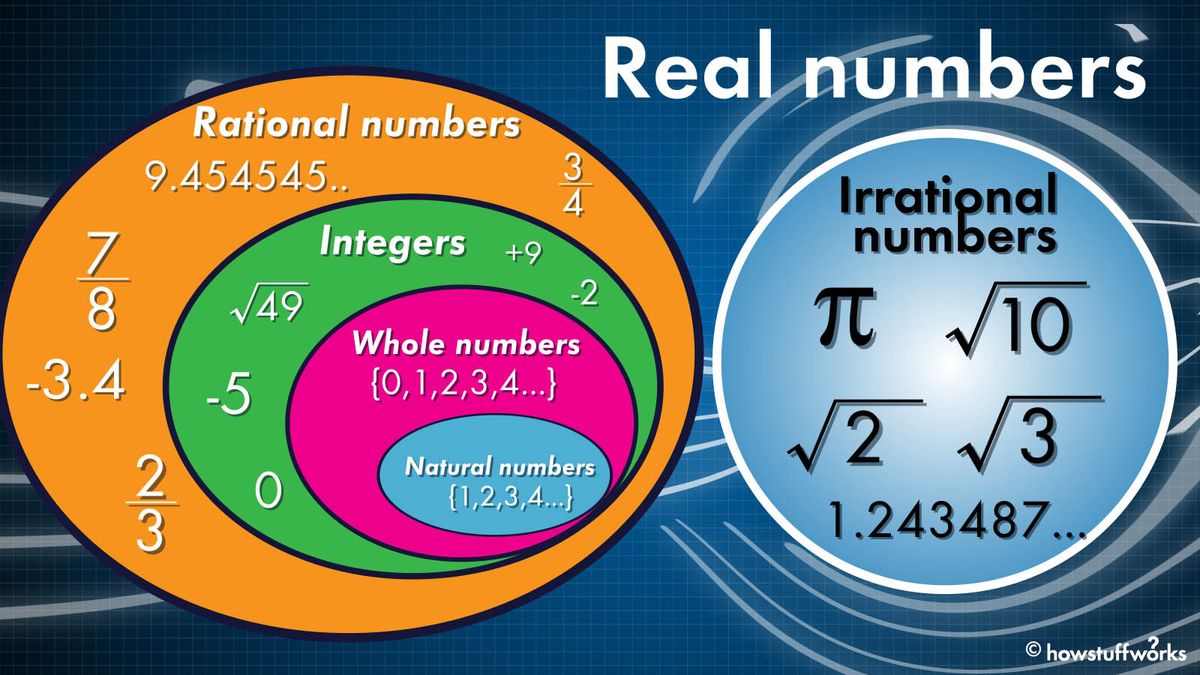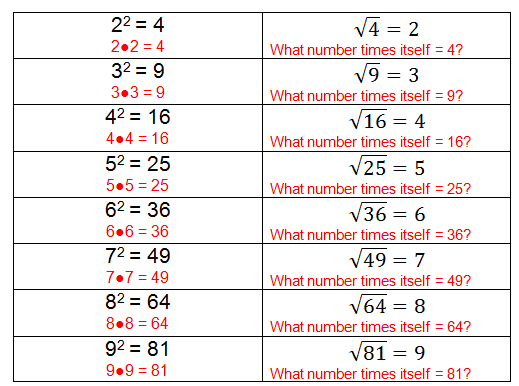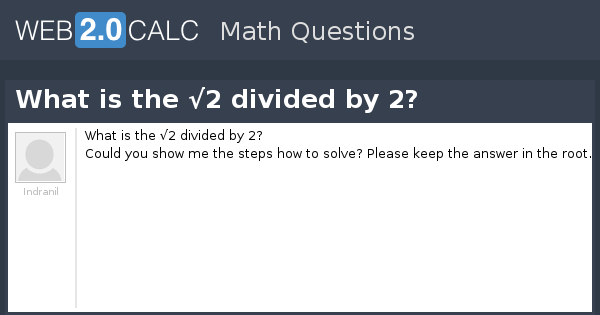Topic square root of 2 is rational or irrational: The question "Is the square root of 2 rational or irrational?" has intrigued mathematicians for centuries. This article delves into the nature of √2, providing clear explanations and proofs to reveal its true classification. Join us as we explore this fascinating mathematical concept and uncover the reasons behind its irrationality.
Table of Content
- Is the Square Root of 2 Rational or Irrational?
- Introduction
- Definition of Rational and Irrational Numbers
- Historical Background
- Mathematical Proofs of Irrationality
- Proof by Contradiction
- Geometric Proofs
- Applications and Implications
- Square Root of 2 in Different Fields
- Impact on Number Theory
- Frequently Asked Questions
- YOUTUBE:
Is the Square Root of 2 Rational or Irrational?
The square root of 2 is a topic of great interest in mathematics, especially in the study of number theory. This article explores whether the square root of 2 is rational or irrational.
Understanding Rational and Irrational Numbers
Before diving into the nature of the square root of 2, it's essential to understand what rational and irrational numbers are:
- Rational Numbers: Numbers that can be expressed as the quotient or fraction of two integers (e.g., 1/2, 3/4). A rational number is of the form p/q, where p and q are integers and q ≠ 0.
- Irrational Numbers: Numbers that cannot be written as a simple fraction. Their decimal expansion is non-repeating and non-terminating (e.g., π, e).
The Nature of √2
The square root of 2 (√2) is known to be an irrational number. This means that √2 cannot be expressed as a fraction p/q, where p and q are integers with q ≠ 0.
Proof of Irrationality
A classic proof by contradiction can demonstrate the irrationality of √2:
- Assume that √2 is rational. Then, √2 can be written as p/q, where p and q are coprime integers (i.e., their greatest common divisor is 1).
- So, we have (√2)^2 = (p/q)^2, which implies 2 = p2/q2.
- This leads to 2q2 = p2.
- Thus, p2 is even (since it equals 2 times q2), which means that p must be even.
- Let p = 2k for some integer k. Substituting this into the equation gives 2q2 = (2k)2 or 2q2 = 4k2, which simplifies to q2 = 2k2.
- This implies that q2 is even, and therefore q must also be even.
- Since both p and q are even, they have a common factor of 2, which contradicts the assumption that p and q are coprime.
- Therefore, the assumption that √2 is rational must be false. Hence, √2 is irrational.
Conclusion
From the proof and definitions provided, we can conclusively state that the square root of 2 is an irrational number. This fundamental result has significant implications in various fields of mathematics and beyond.

READ MORE:
Introduction
The question of whether the square root of 2 is rational or irrational has fascinated mathematicians and scholars for centuries. The square root of 2, denoted as √2, is a number that, when multiplied by itself, equals 2. This mathematical curiosity extends beyond mere numbers, touching on fundamental principles of number theory and the nature of irrationality.
To understand why √2 is classified as an irrational number, it's essential to first define what we mean by rational and irrational numbers:
- Rational Numbers: These are numbers that can be expressed as the quotient or fraction of two integers, where the denominator is not zero. For example, 1/2, 3/4, and 5 are all rational numbers.
- Irrational Numbers: These are numbers that cannot be expressed as a simple fraction. Their decimal expansions are non-terminating and non-repeating. Examples include π (pi) and e.
The discovery of the irrationality of √2 dates back to ancient Greece, where the Pythagoreans first encountered it while studying the properties of right-angled triangles. The realization that √2 could not be written as a fraction was groundbreaking and even led to significant philosophical and mathematical shifts at the time.
In this article, we will explore the mathematical proofs that demonstrate the irrationality of √2, examine its implications in various fields, and understand why this seemingly simple number holds such a profound place in the world of mathematics.
Definition of Rational and Irrational Numbers
Understanding the concepts of rational and irrational numbers is fundamental to grasping why the square root of 2 is considered irrational. Let's delve into these definitions in detail:
- Rational Numbers: Rational numbers are those that can be expressed as a fraction or quotient of two integers, where the numerator is an integer \( p \) and the denominator is a non-zero integer \( q \). The general form is \( \frac{p}{q} \). For example:
- The number \( \frac{1}{2} \) is rational because it can be expressed as the fraction of two integers: 1 and 2.
- The number 5 is also rational because it can be written as \( \frac{5}{1} \).
- Numbers like \( 0.75 \) are rational because \( 0.75 = \frac{3}{4} \).
- Irrational Numbers: Irrational numbers, on the other hand, cannot be expressed as a simple fraction of two integers. Their decimal expansions are non-terminating and non-repeating. Some well-known examples include:
- The number \( \pi \) (pi), which is approximately 3.14159, continues indefinitely without repeating.
- The number \( e \) (Euler's number), which is approximately 2.71828, also has a non-repeating, non-terminating decimal expansion.
The key difference between rational and irrational numbers lies in their decimal representations and their ability to be expressed as fractions. Rational numbers have decimal expansions that either terminate or repeat, while irrational numbers have decimal expansions that go on forever without repeating.
By these definitions, the square root of 2 (\( \sqrt{2} \)) is considered irrational because its decimal expansion (approximately 1.41421356237...) is non-terminating and non-repeating. This classification is significant in mathematics as it helps distinguish between different types of numbers and their properties.
Historical Background
The discovery of the irrationality of the square root of 2 is a significant milestone in the history of mathematics. This revelation dates back to ancient Greece and is attributed to the Pythagoreans, a group of mathematicians and philosophers led by Pythagoras.
The Pythagoreans believed that all numbers could be expressed as the ratio of two integers, a fundamental principle in their philosophy. However, their study of geometry, particularly the properties of right-angled triangles, led to a profound discovery.
The problem arose when they considered the diagonal of a square. According to the Pythagorean theorem, the length of the diagonal of a square with side length 1 is \( \sqrt{2} \). The Pythagoreans initially assumed that \( \sqrt{2} \) could be expressed as a ratio of two integers, i.e., \( \frac{p}{q} \), where \( p \) and \( q \) are coprime integers.
One of the most famous proofs of the irrationality of \( \sqrt{2} \) is attributed to a Pythagorean named Hippasus. The proof, which is a classic example of a proof by contradiction, goes as follows:
- Assume that \( \sqrt{2} \) is rational. Then it can be written as \( \frac{p}{q} \), where \( p \) and \( q \) are coprime integers.
- So, \( (\sqrt{2})^2 = \left(\frac{p}{q}\right)^2 \) implies \( 2 = \frac{p^2}{q^2} \).
- This leads to \( 2q^2 = p^2 \), meaning \( p^2 \) is even, which implies that \( p \) must be even (since the square of an odd number is odd).
- Let \( p = 2k \) for some integer \( k \). Substituting this into the equation gives \( 2q^2 = (2k)^2 \), or \( 2q^2 = 4k^2 \), which simplifies to \( q^2 = 2k^2 \).
- This implies that \( q^2 \) is even, and thus \( q \) must also be even.
- Since both \( p \) and \( q \) are even, they have a common factor of 2, contradicting the assumption that \( p \) and \( q \) are coprime.
- Therefore, the assumption that \( \sqrt{2} \) is rational must be false. Hence, \( \sqrt{2} \) is irrational.
This discovery was groundbreaking and shook the foundations of the Pythagorean philosophy. The realization that not all numbers could be expressed as ratios of integers led to significant developments in mathematics and the concept of irrational numbers.
The impact of this discovery extends beyond ancient Greece, influencing mathematical thought and theory throughout history. The irrationality of \( \sqrt{2} \) remains a fundamental concept in number theory and continues to be a topic of interest and exploration in modern mathematics.
Mathematical Proofs of Irrationality
The proof of the irrationality of the square root of 2 (\( \sqrt{2} \)) is a cornerstone in the field of number theory. There are several methods to demonstrate this, with the most famous being the proof by contradiction. Let's explore this proof in detail, step by step:
Proof by Contradiction
- Assume that \( \sqrt{2} \) is rational. This means it can be written as \( \frac{p}{q} \), where \( p \) and \( q \) are coprime integers (i.e., their greatest common divisor is 1).
- Square both sides of the equation \( \sqrt{2} = \frac{p}{q} \) to get \( 2 = \frac{p^2}{q^2} \).
- Rearrange this to \( 2q^2 = p^2 \).
- Since \( p^2 \) is an integer and \( 2q^2 \) is even, \( p^2 \) must also be even. Thus, \( p \) must be even (since the square of an odd number is odd).
- Let \( p = 2k \) for some integer \( k \). Substitute \( p \) into the equation \( 2q^2 = p^2 \):
- \( 2q^2 = (2k)^2 \) which simplifies to \( 2q^2 = 4k^2 \).
- Divide both sides by 2 to get \( q^2 = 2k^2 \).
- This shows that \( q^2 \) is even, which implies that \( q \) is also even.
- If both \( p \) and \( q \) are even, they have a common factor of 2, contradicting the assumption that \( p \) and \( q \) are coprime.
- Therefore, the assumption that \( \sqrt{2} \) is rational must be false. Hence, \( \sqrt{2} \) is irrational.
Alternative Geometric Proof
Another proof involves a geometric argument using the properties of a right-angled isosceles triangle:
- Consider a right-angled isosceles triangle with legs of length 1. The hypotenuse of this triangle will have a length of \( \sqrt{2} \) according to the Pythagorean theorem.
- Assume \( \sqrt{2} \) is rational and can be expressed as \( \frac{p}{q} \), where \( p \) and \( q \) are coprime integers.
- Construct a smaller right-angled isosceles triangle inside the original triangle, whose hypotenuse is \( \frac{p}{q} \). The sides of this smaller triangle will again have lengths that suggest a rational hypotenuse, leading to an infinite regression.
- This infinite regression implies a contradiction, thus proving that \( \sqrt{2} \) cannot be rational.
These proofs highlight the irrationality of \( \sqrt{2} \) and are fundamental in understanding the nature of irrational numbers. The discovery and proof of the irrationality of \( \sqrt{2} \) have profound implications in mathematics, influencing various fields and mathematical theories.

Proof by Contradiction
The proof by contradiction is a classic and elegant method to demonstrate the irrationality of the square root of 2 (\( \sqrt{2} \)). This proof relies on assuming the opposite of what we want to prove and then showing that this assumption leads to a contradiction. Here’s the step-by-step proof:
- Assume that \( \sqrt{2} \) is a rational number. This means we can express \( \sqrt{2} \) as a fraction \( \frac{p}{q} \), where \( p \) and \( q \) are coprime integers (i.e., their greatest common divisor is 1).
- From this assumption, we have: \[ \sqrt{2} = \frac{p}{q} \]
- Square both sides of the equation to get: \[ 2 = \left(\frac{p}{q}\right)^2 \] This simplifies to: \[ 2 = \frac{p^2}{q^2} \]
- Multiply both sides of the equation by \( q^2 \) to eliminate the fraction: \[ 2q^2 = p^2 \]
- Since \( p^2 \) is equal to \( 2q^2 \), \( p^2 \) must be an even number (because it is 2 times some integer). Therefore, \( p \) must also be even (since the square of an odd number is odd, and the square of an even number is even).
- If \( p \) is even, we can write \( p \) as \( 2k \) for some integer \( k \). Substituting \( p = 2k \) into the equation \( 2q^2 = p^2 \) gives: \[ 2q^2 = (2k)^2 \] Simplifying this, we get: \[ 2q^2 = 4k^2 \] Dividing both sides by 2, we obtain: \[ q^2 = 2k^2 \]
- This equation shows that \( q^2 \) is also even, which implies that \( q \) must be even.
- If both \( p \) and \( q \) are even, they share a common factor of 2. This contradicts our initial assumption that \( p \) and \( q \) are coprime (having no common factors other than 1).
- Since our assumption that \( \sqrt{2} \) is rational leads to a contradiction, we must conclude that \( \sqrt{2} \) is not rational. Therefore, \( \sqrt{2} \) is irrational.
This proof by contradiction elegantly demonstrates that the square root of 2 cannot be expressed as a fraction of two integers, affirming its irrational nature. It highlights the power of logical reasoning in uncovering the properties of numbers.
Geometric Proofs
Geometric proofs provide a visual and intuitive way to understand the irrationality of the square root of 2 (\( \sqrt{2} \)). One of the most famous geometric proofs involves the properties of right-angled isosceles triangles. Here’s a detailed step-by-step explanation:
Geometric Proof Using Right-Angled Isosceles Triangle
- Consider a right-angled isosceles triangle where both legs have a length of 1 unit.
- By the Pythagorean theorem, the length of the hypotenuse of this triangle is \( \sqrt{2} \): \[ \text{Hypotenuse}^2 = 1^2 + 1^2 = 2 \] \[ \text{Hypotenuse} = \sqrt{2}
- Assume that \( \sqrt{2} \) is rational. This means \( \sqrt{2} \) can be expressed as a fraction \( \frac{p}{q} \), where \( p \) and \( q \) are coprime integers.
- Construct a smaller right-angled isosceles triangle inside the original triangle such that the legs of the smaller triangle are the difference between the hypotenuse and one of the legs of the original triangle.
- The hypotenuse of this smaller triangle will also have a length of \( \sqrt{2} \). This construction leads to an infinite sequence of smaller and smaller right-angled isosceles triangles, each with hypotenuse \( \sqrt{2} \).
- This infinite regression implies that there are infinitely many pairs of coprime integers \( p \) and \( q \) such that \( \sqrt{2} = \frac{p}{q} \), which is impossible because there are only a finite number of pairs of coprime integers for any given fraction.
- Therefore, the assumption that \( \sqrt{2} \) is rational leads to a contradiction, proving that \( \sqrt{2} \) is irrational.
Geometric Proof Using a Square
- Consider a square with each side of length 1 unit. The diagonal of this square will have a length of \( \sqrt{2} \) units, as derived from the Pythagorean theorem: \[ \text{Diagonal}^2 = 1^2 + 1^2 = 2 \] \[ \text{Diagonal} = \sqrt{2}
- Assume that the diagonal length \( \sqrt{2} \) is rational and can be expressed as \( \frac{p}{q} \), where \( p \) and \( q \) are coprime integers.
- Draw another square inside the original square by connecting the midpoints of the sides. The sides of this smaller square will be parallel to the original square’s sides, and its diagonal will again have a length of \( \sqrt{2} \).
- Repeating this process creates an infinite sequence of squares, each with diagonals of length \( \sqrt{2} \), implying an infinite number of pairs of coprime integers \( p \) and \( q \), which is impossible.
- This contradiction confirms that the initial assumption is false, and therefore \( \sqrt{2} \) is irrational.
These geometric proofs provide a powerful visual and logical approach to understanding why \( \sqrt{2} \) cannot be expressed as a ratio of two integers, reinforcing its classification as an irrational number.
Applications and Implications
The irrationality of the square root of 2 (\( \sqrt{2} \)) has far-reaching applications and implications in various fields of mathematics, science, and engineering. Understanding its irrationality not only deepens mathematical theory but also influences practical applications. Here are some significant aspects:
Mathematical Theory
- Number Theory: The proof of the irrationality of \( \sqrt{2} \) is a fundamental result in number theory. It sets the stage for understanding the properties of irrational numbers and their place within the real number system.
- Algebraic Structures: The concept of irrational numbers like \( \sqrt{2} \) helps in the development of algebraic structures such as fields and rings, where the distinction between rational and irrational numbers is crucial.
- Real Analysis: The study of limits, sequences, and series in real analysis often involves irrational numbers. Understanding \( \sqrt{2} \)'s irrationality aids in comprehending the behavior of real-valued functions.
Geometry and Trigonometry
- Pythagorean Theorem: The square root of 2 appears in the Pythagorean theorem as the hypotenuse of a right-angled isosceles triangle with legs of length 1. This is a fundamental result in Euclidean geometry.
- Trigonometric Functions: The value of \( \sqrt{2} \) is essential in trigonometric functions, especially in calculating the lengths of sides in right-angled triangles and in various trigonometric identities.
Engineering and Technology
- Computer Science: In computer algorithms, especially those dealing with numerical methods and computational geometry, the irrationality of \( \sqrt{2} \) is significant for precise calculations and algorithm efficiency.
- Signal Processing: The properties of irrational numbers are used in signal processing and digital communications to optimize signals and reduce errors.
- Construction and Design: Architectural designs often rely on precise measurements involving irrational numbers like \( \sqrt{2} \). For example, the diagonal measurements of squares and rectangles in construction require an understanding of irrational lengths.
Scientific Research
- Physics: In quantum mechanics and other branches of physics, the irrationality of certain values, including \( \sqrt{2} \), plays a role in understanding the properties of waves and particles.
- Mathematical Models: Models in various scientific disciplines use irrational numbers to describe natural phenomena accurately, ensuring that the models reflect real-world complexities.
The discovery of the irrationality of \( \sqrt{2} \) has profound implications across multiple domains, illustrating the interconnectedness of mathematics with science and technology. It highlights the importance of mathematical rigor and the need for precise understanding in both theoretical and applied contexts.
Square Root of 2 in Different Fields
The square root of 2, an irrational number, appears in various fields, influencing mathematics, science, engineering, and the arts. Its applications showcase its significance across these domains.
Mathematics
In mathematics, the square root of 2 is fundamental in geometry and algebra. It is notably significant in the Pythagorean theorem, where the length of the hypotenuse of a right triangle with legs of 1 is √2. This relationship extends to various geometric constructions and proofs.
Moreover, the square root of 2 is involved in continued fractions, leading to efficient approximations used in numerical analysis. For example, the fraction 99/70 provides a close approximation.
Science and Engineering
In science and engineering, the square root of 2 often appears in calculations involving right triangles and in the design of electronic circuits. The ratio is crucial in determining component values and signal processing.
Additionally, the square root of 2 is used in physics for wave calculations and in quantum mechanics for defining certain constants and probabilities.
Architecture and Art
Historically, the square root of 2 has been used in architecture, particularly by the ancient Romans. They employed the √2 ratio, known as the ad quadratum technique, in designing structures like atriums and pavements to achieve aesthetic and structural balance.
Artists and designers have also utilized the √2 ratio to create visually pleasing compositions, leveraging its unique properties for proportionality and balance.
Computing and Algorithms
In computing, algorithms to approximate the square root of 2, such as the Babylonian method, are fundamental. These algorithms are implemented in computer systems and calculators to perform precise calculations, crucial for software development and engineering applications.
The iterative methods used in these algorithms highlight the importance of √2 in computational mathematics.
Music and Acoustics
In music, the square root of 2 can be linked to the tuning of musical instruments and the division of octaves. The equal temperament tuning system, used for pianos and other instruments, divides the octave into 12 equal parts, with each step being the 12th root of 2, an approximation that closely relates to √2.
Conclusion
The square root of 2, although an irrational number, finds rational applications across a spectrum of fields, illustrating its profound and practical importance. From mathematics to art, its influence is pervasive and enduring, demonstrating the interconnectedness of various disciplines through mathematical constants.

Impact on Number Theory
The discovery of the irrationality of the square root of 2 has had profound implications in number theory, fundamentally altering the way mathematicians understand numbers and their properties.
- Proof Techniques: The proof that √2 is irrational introduced proof by contradiction, a powerful mathematical technique. This method starts by assuming the opposite of what you want to prove and then shows that this assumption leads to a contradiction. For √2, assuming it is rational (i.e., it can be expressed as a fraction of two integers) leads to a logical contradiction, proving it must be irrational.
- Continued Fractions: The irrationality of √2 can be demonstrated using its continued fraction representation. Unlike rational numbers, which have finite or repeating continued fractions, √2 has an infinite, non-repeating continued fraction. This insight has furthered the study of continued fractions and their applications in approximating irrational numbers.
- Pell's Equation: The study of √2 is closely related to Pell's equation, \(x^2 - 2y^2 = 1\), which has solutions that can be used to approximate √2. The solutions to this equation are significant in the field of Diophantine equations, which are polynomial equations that seek integer solutions.
- Algebraic Numbers: The concept of irrational numbers like √2 has expanded to include algebraic numbers, which are roots of polynomial equations with integer coefficients. Understanding the properties of algebraic numbers helps in classifying numbers and exploring their relationships.
- Field Theory: The irrationality of √2 also impacts field theory, a branch of algebra that studies the algebraic structure known as fields. The field \(\mathbb{Q}(\sqrt{2})\), which consists of all numbers of the form \(a + b\sqrt{2}\) where \(a\) and \(b\) are rational numbers, is a simple example of a number field, showing how irrationals can be systematically studied within algebraic structures.
The irrationality of the square root of 2 not only challenges the ancient Greek notion of number but also continues to inspire mathematical exploration and discovery, cementing its place as a cornerstone in the foundation of modern number theory.
Frequently Asked Questions
Here are some common questions and answers related to the irrationality of the square root of 2:
-
What is the definition of an irrational number?
An irrational number is a real number that cannot be expressed as a ratio of two integers. It has an infinite, non-repeating decimal expansion.
-
How do you prove that the square root of 2 is irrational?
The proof involves assuming that \(\sqrt{2}\) can be written as a ratio of two integers \( \frac{a}{b} \) in lowest terms. By squaring both sides, we get \(2 = \frac{a^2}{b^2}\), which simplifies to \(a^2 = 2b^2\). This implies that \(a^2\) is even, so \(a\) must be even. Let \(a = 2k\), then substituting back gives \(4k^2 = 2b^2\), or \(b^2 = 2k^2\), implying \(b\) is also even. This contradicts the assumption that \( \frac{a}{b} \) is in lowest terms, hence \(\sqrt{2}\) is irrational.
-
Can you provide an example of an irrational number?
Yes, other examples of irrational numbers include \(\sqrt{3}\), \(\pi\), and \(e\). These numbers also cannot be expressed as a ratio of two integers and have non-repeating, infinite decimal expansions.
-
Why is it important to prove that the square root of 2 is irrational?
Proving the irrationality of \(\sqrt{2}\) is fundamental to understanding the nature of numbers and the real number system. It has significant implications in various fields such as mathematics, computer science, and cryptography, where the properties of numbers play a critical role.
-
Is it possible to find the exact value of the square root of 2?
No, the exact value of \(\sqrt{2}\) cannot be represented as a finite or repeating decimal or fraction. Its decimal representation is approximately 1.41421356237..., continuing indefinitely without repeating.
-
What are some applications of the square root of 2?
The square root of 2 is used in various mathematical and practical applications, including geometry, engineering, and computer algorithms. For instance, it appears in the calculation of diagonal lengths in squares and in certain optimization algorithms.
Chứng Minh: Căn Bậc Hai của 2 là Số Vô Tỉ
READ MORE:
Chứng Minh Căn Bậc Hai của 2 là Số Vô Tỉ | Đại Số I | Khan Academy










